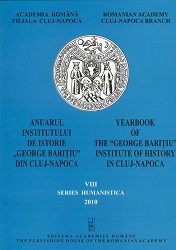GÂNDIREA CU SUSU-N JOS – O GÂNDIRE NOUĂ PENTRU O LUME NOUĂ. PUNEREA PROBLEMEI
The Upside Down Thinking – A New Type of Thinking for a New World. Posing the Problem
Author(s): Aurel NegucioiuSubject(s): Economy
Published by: Editura Academiei Române
Keywords: thought; thinking; words; concepts; language; movement; change; discontinuity; rational; irrational; irrationality; reason; non-reason; discontinuous change; gradual/graded change; comfortable change, reversed thinking; upside down thinking
Summary/Abstract: “I think, therefore I exist”. The human thinking is an extremely complex process of the brain, its form of action and manifestation. The human being reflects the surrounding reality through thinking, and the latter configures, in one way or another, the image of different human states or actions. An Indian proverb says that deeds follow ideas just as the cart wheels follow the trails of the oxen. Confidently enough, we can say that people’s deeds and actions are the concrete manifestation and embodiment of their thought which always precedes them. The thought, the human thinking, reflects and imagines. It also conceives conceptualizes and, by means of words, concepts and new models, it formulates ideas, paradigms and theories. Thus, it gets externalized, on the one hand and, on the other hand, it makes its way into the wide world. The history of the human society gives irrefutable proof that the role of thinking in the evolution of the human being, of the human society has gained in importance along with their development. Nowadays, more than ever, mankind cannot live without ideas, without the process of thinking. The forms of manifestation of the human thinking are becoming more and more numerous and varied. Our communication dwells now on a so-called reversed thinking or upside down thinking which is spreading more and more in today’s society which is also characterized as an upside down society. So is its state. After a very brief journey into the history of this type of thinking, we approach the distinctive signs of this form of thinking, on the operation mechanism, on the contribution already inscribed in its assets, as well as on the opportunities and probable possibilities which it opens towards different fields of the scientific knowledge.
Journal: Anuarul Institutului de Istorie »George Baritiu« din Cluj-Napoca - Seria HUMANISTICA
- Issue Year: VIII/2010
- Issue No: 8
- Page Range: 251-260
- Page Count: 10
- Language: Romanian

